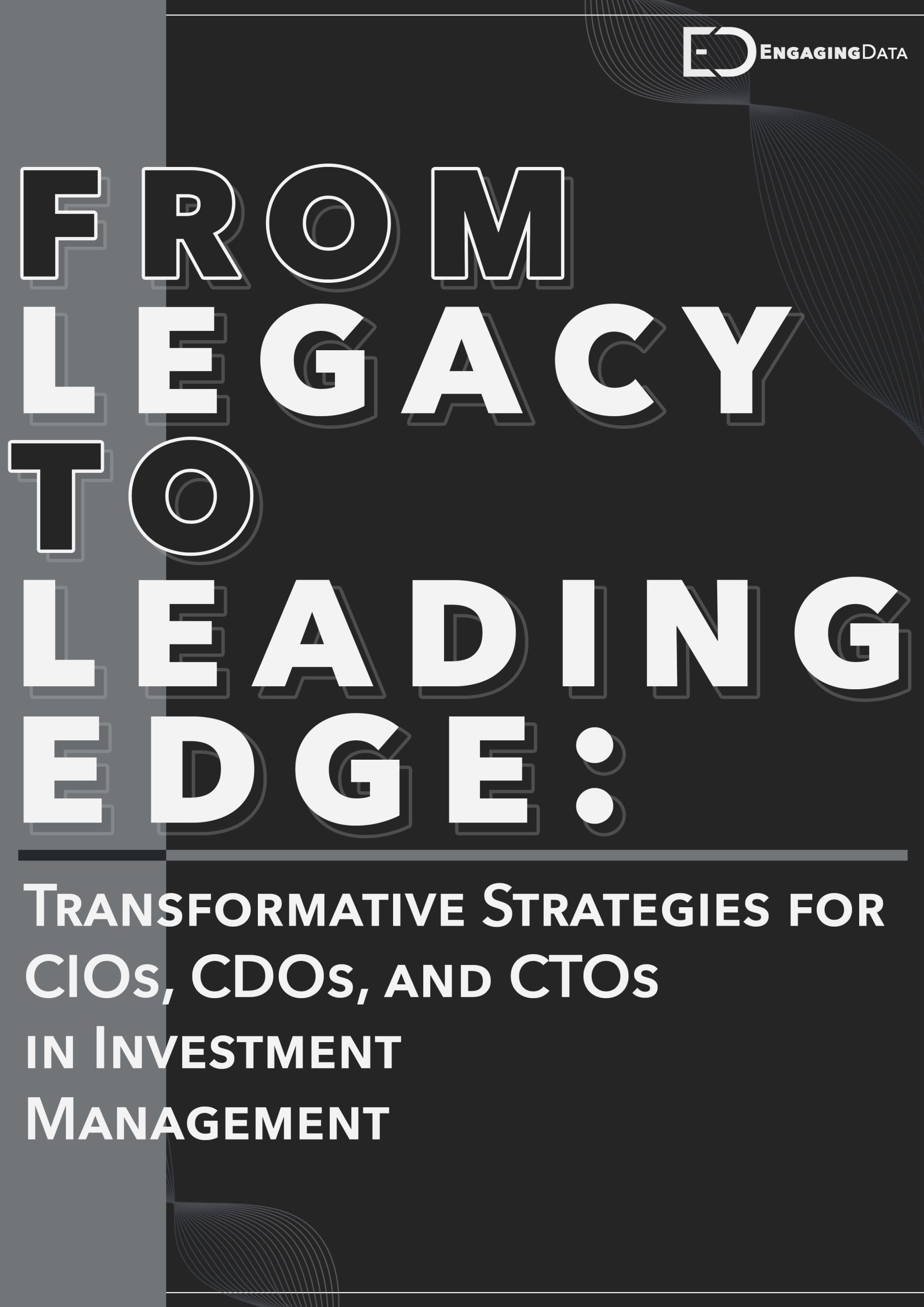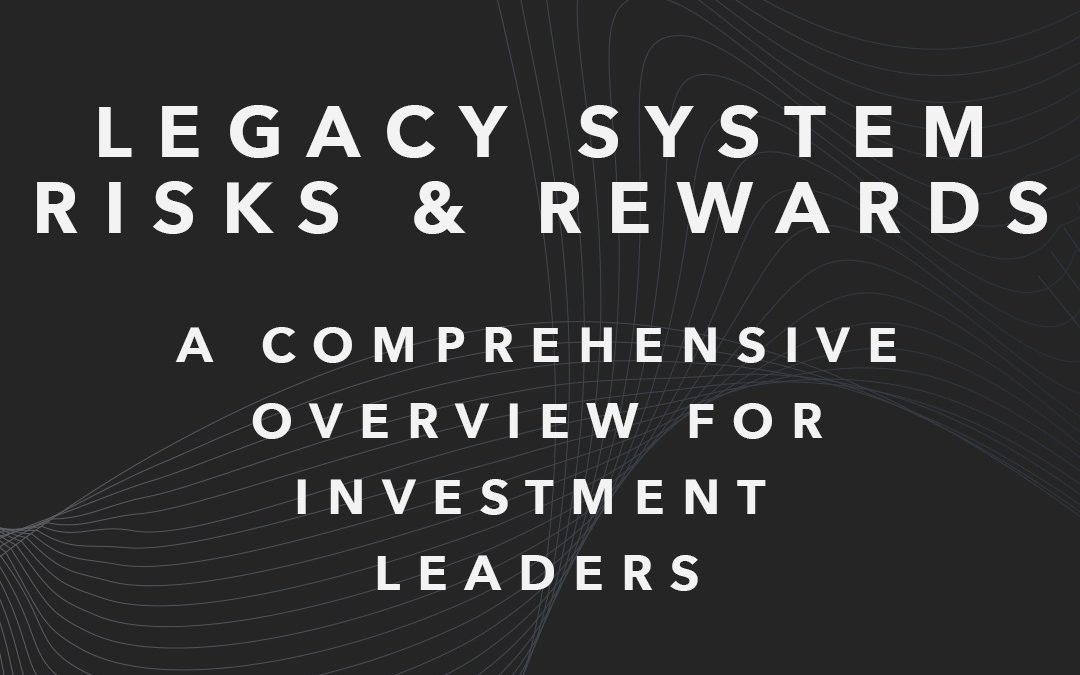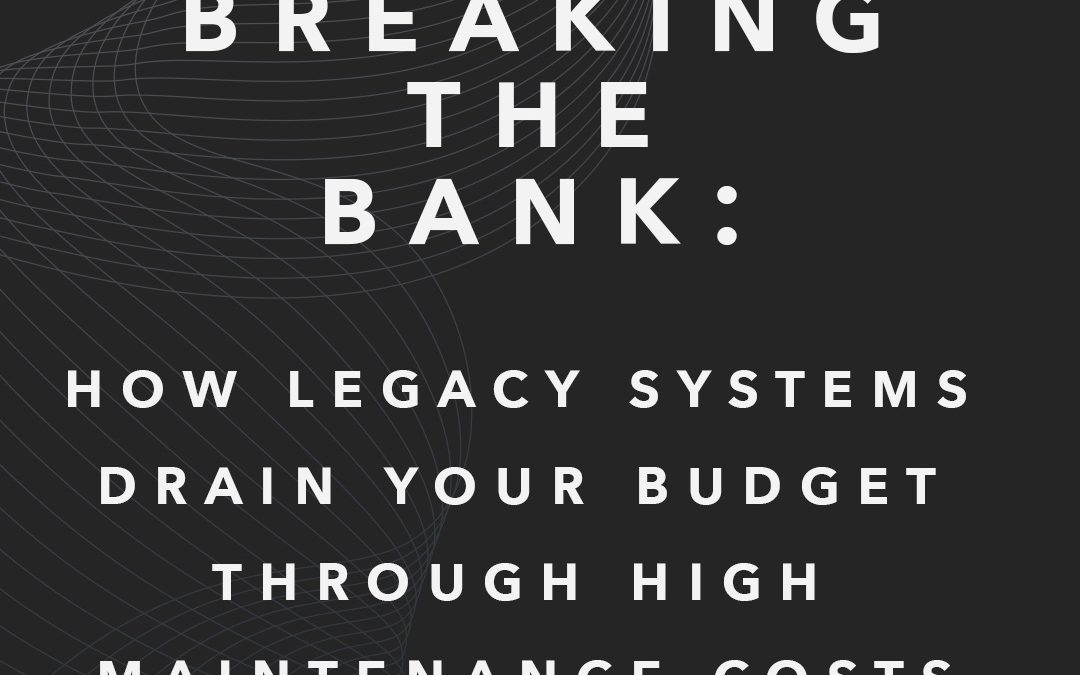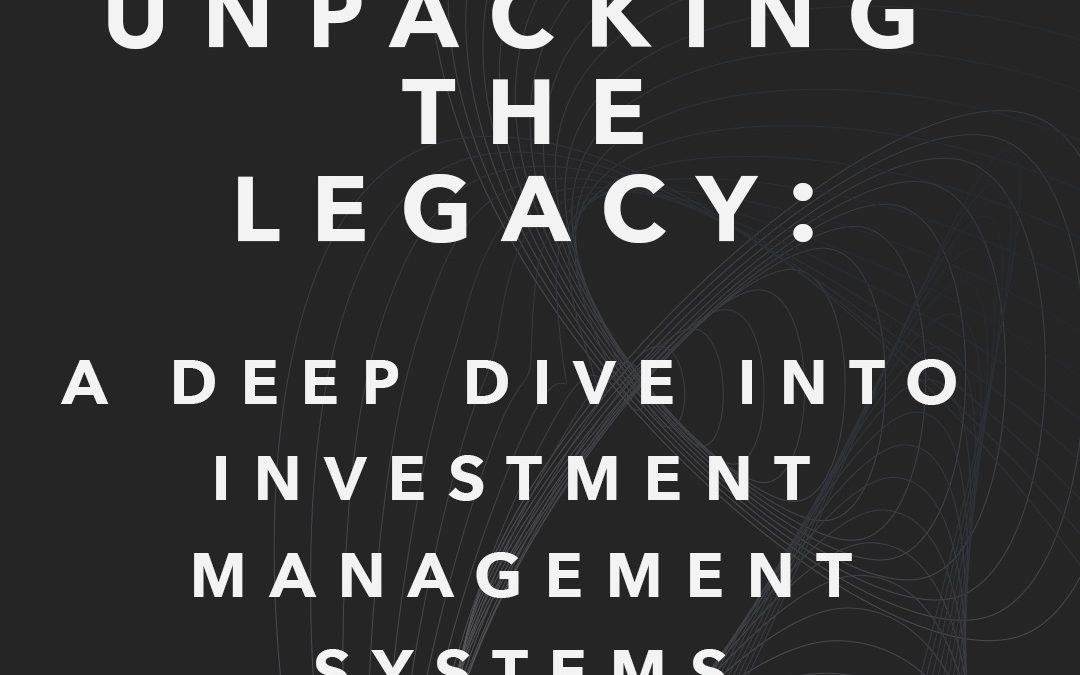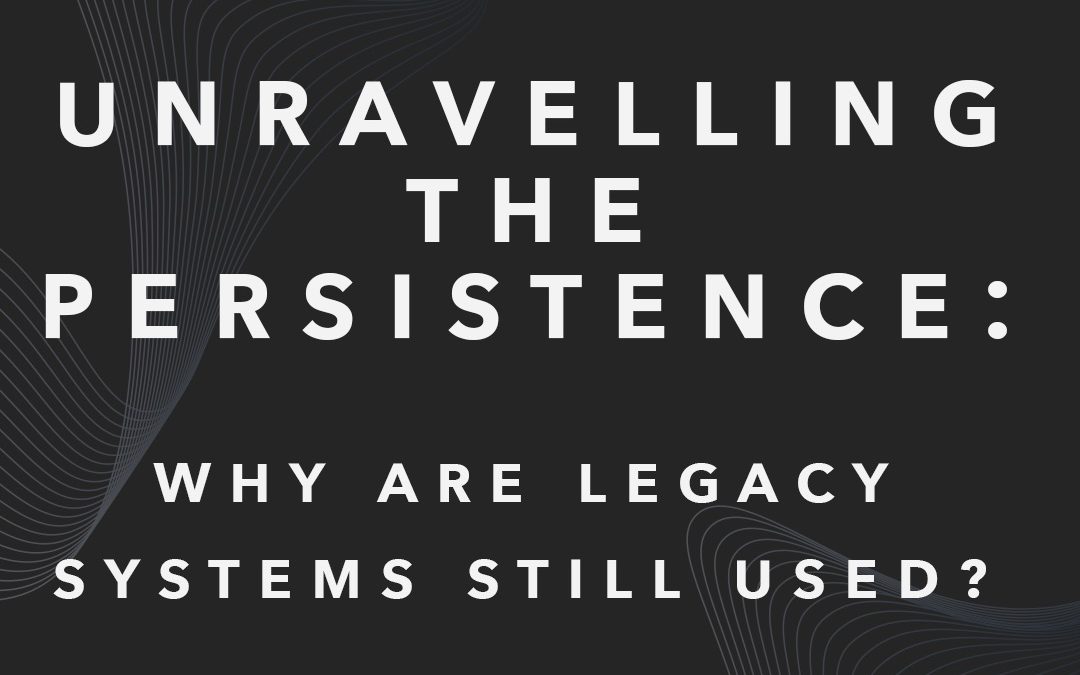
Unravelling the Persistence: Why Are Legacy Systems Still Used?
Unravelling the Persistence: Why Are Legacy Systems Still Used?
Legacy systems have long been the backbone of many businesses, providing reliability and specialised functionality. Despite the reliable role legacy systems play within these organisations, the rapid pace of technological evolution prompts us to scrutinise and ask the question: Why are Legacy Systems Still Used?
The persistence in using these systems should no longer be happening and there is a necessity for change.
The allure of the latest trends often overshadows the benefits of legacy systems. While the adoption of cutting-edge technologies may sound enticing in marketing materials, the reality is that many businesses continue to rely on systems that have been in place for decades.
This blog post will delve into the reasons behind the continued use of legacy systems, the associated challenges, and strategies for navigating this complex terrain.
Understanding Legacy Systems: A Foundation and a Challenge
Legacy systems, encompassing outdated technology, software or hardware, have become synonymous with the operational history of organisations. Although these systems are integral, their lack of modern features poses challenges, making it imperative for businesses to assess the need for change.
Challenges of Legacy Systems:
- Maintenance and Support Challenges: As legacy systems age, vendors may cease support, charge premiums for maintenance, and withhold updates, leaving businesses vulnerable to operational disruptions.
- Security Vulnerabilities: Built with outdated technology, legacy systems become susceptible to cyber-attacks. The absence of regular updates exacerbates security risks, potentially leading to data breaches.
- Inefficiency in Modern Business: Legacy systems may struggle to meet the dynamic needs of modern business operations, hindering efficiency, scalability, and the ability to handle increased demands.
- Compliance Challenges: Evolving regulations may render legacy systems non-compliant, exposing businesses to legal and financial risks. Generating required reports for compliance becomes challenging, undermining regulatory adherence.
If this list wasn’t long enough, we have discussed more problems with legacy systems here: Unpacking the Legacy: A Deep Dive into Investment Management Systems
Why Business Still Use Legacy Systems: The Dilemma
Despite these challenges, several compelling reasons drive businesses to maintain their allegiance to legacy systems.
- Cost of Transitioning: The upfront costs of transitioning from legacy to modern systems, including installation, integration, and employee training, pose financial challenges, especially for organizations on a budget.
- Fulfilling Critical Business Needs: Legacy systems, having evolved to meet specific business requirements, remain critical to operations. Replacing them risks disrupting business processes that have been finely tuned over time.
- Ease of Maintenance: Internal teams’ specialized skills and established relationships with third-party vendors offering support for legacy systems make maintenance easier than transitioning to unfamiliar modern systems.
- Customization and Specific Functionality: Legacy systems may have unique features tailored to specific business needs, making it difficult for organizations to transition without sacrificing critical functionality.
- Interoperability: Integrated with various systems, databases, and applications, legacy systems are customized to work seamlessly within existing ecosystems. Replacing them requires significant investments in time, effort, and resources to ensure compatibility.
Strategies for Navigating Legacy Systems: A Balanced Approach
While the allure of modernisation is undeniable, businesses must adopt strategies that align with their unique needs and constraints.
- Evaluation of Risks and Benefits: A thorough assessment of the risks and benefits of both legacy and modern systems is essential. This evaluation, done in consultation with internal teams, provides insights into which system aligns best with business needs.
- Modernization through Updating or Replacement: Incremental modernization by updating or replacing outdated components can improve functionality, security, and scalability. A phased approach minimizes disruption to business operations.
- Hybrid Solutions: Leveraging a combination of legacy and modern technologies through hybrid solutions allows businesses to enjoy the benefits of both systems, striking a balance between familiarity and innovation.
The Future of Legacy Systems: Adapting for Continued Relevance
As technology advances, legacy systems will play a pivotal role in bridging the old and the new technologies.
- Data Integration: Legacy systems can integrate data with newer systems, providing a comprehensive view of business operations.
- Application Programming Interfaces (APIs): APIs connect legacy systems with newer technologies, enabling data exchange and leveraging the latest advancements.
- Web Services: Exposing legacy systems as web services extends their compatibility with newer technologies, prolonging their lifespan.
- System Orchestration: Utilizing legacy systems as central hubs for coordinating data and workflows between different systems ensures continued relevance.
Embracing Modernisation: How to Better Your Business
While legacy systems have served as reliable workhorses for many businesses, the imperative to modernise is more crucial than ever. Here are why businesses should consider modernisation, even when fully entrenched in the familiarity of legacy systems.
- Enabling Innovation and Future-Proofing: Modernization opens doors to innovation, empowering businesses to harness emerging technologies like AI and data analytics for sustained success.
- Meeting Evolving Customer Expectations: Adapting to dynamic customer needs is crucial. Modernization ensures your organization can deliver seamless, personalized experiences, enhancing customer satisfaction and loyalty.
- Staying Competitive in the Digital Landscape: In a rapidly evolving business landscape, modernization is key to staying competitive. It signals a commitment to progress, positioning your business as a forward-thinking industry leader.
- Mitigating Security and Compliance Risks: Modern systems provide robust security features, reducing the risk of data breaches. Compliance with evolving regulations becomes more manageable, minimizing legal and financial risks.
- Enhancing Operational Efficiency: Legacy systems may become bottlenecks over time. Modernization streamlines processes improves productivity, and enables seamless scalability for business growth.
- Facilitating Interconnected Ecosystems: In today’s interconnected business world, modernization fosters collaboration by overcoming the integration challenges posed by legacy systems.
- Attracting and Retaining Top Talent: Modernization appeals to the modern workforce, attracting tech-savvy professionals and contributing to overall employee satisfaction and retention.
In essence, while legacy systems have played a crucial role, modernisation is the strategic step forward for businesses aiming to thrive in the digital age. By embracing change, organisations position themselves for innovation, growth, and sustainability.
In conclusion, while legacy systems continue to be indispensable for many businesses, an understanding of their challenges and the adoption of thoughtful modernisation strategies are crucial. By navigating the delicate balance between the comfort of the familiar and the need for progress, businesses can embrace sustainable growth in today’s fast-paced business environment.
Unlock the Future: Download Our Whitepaper
As you navigate the complex landscape of legacy systems and modernisation strategies, we urge you to delve deeper into the insights and practical guidance we’ve compiled in our exclusive whitepaper, titled ‘From Legacy to Leading Edge.’
This comprehensive resource is crafted to empower CIOs, CDOs, and CTOs in the UK investment management industry with the knowledge and strategies needed to transition seamlessly into the future.
Download our FREE Whitepaper, just fill out the form below!
FREE DOWNLOAD: From Legacy to Leading Edge: Transformative Strategies for CIOs, CDOs, and CTOs in Investment Management
By submitting your information, you’re giving us permission to email you. You can unsubscribe at any time. FYI: We won’t spam your inbox!

